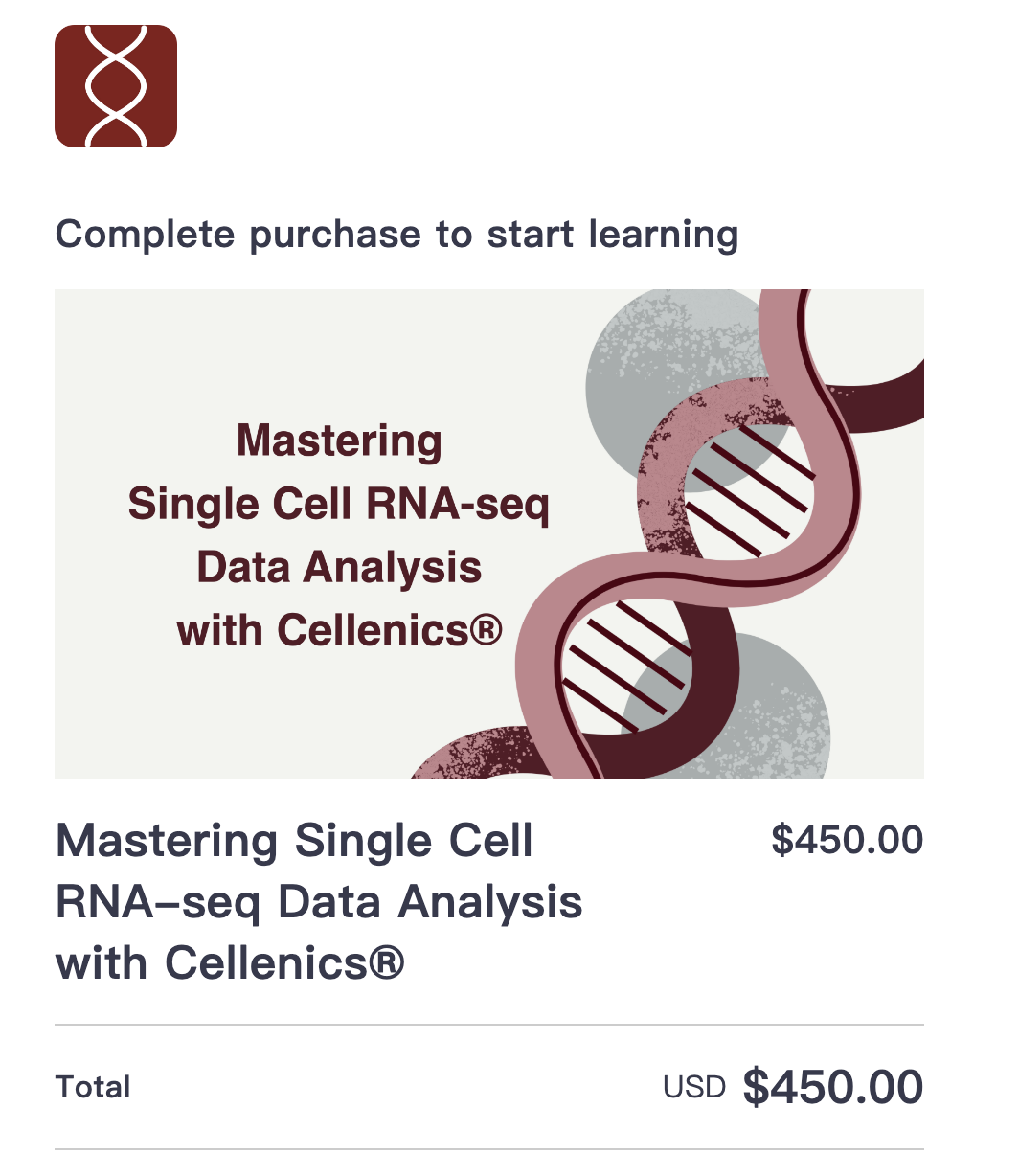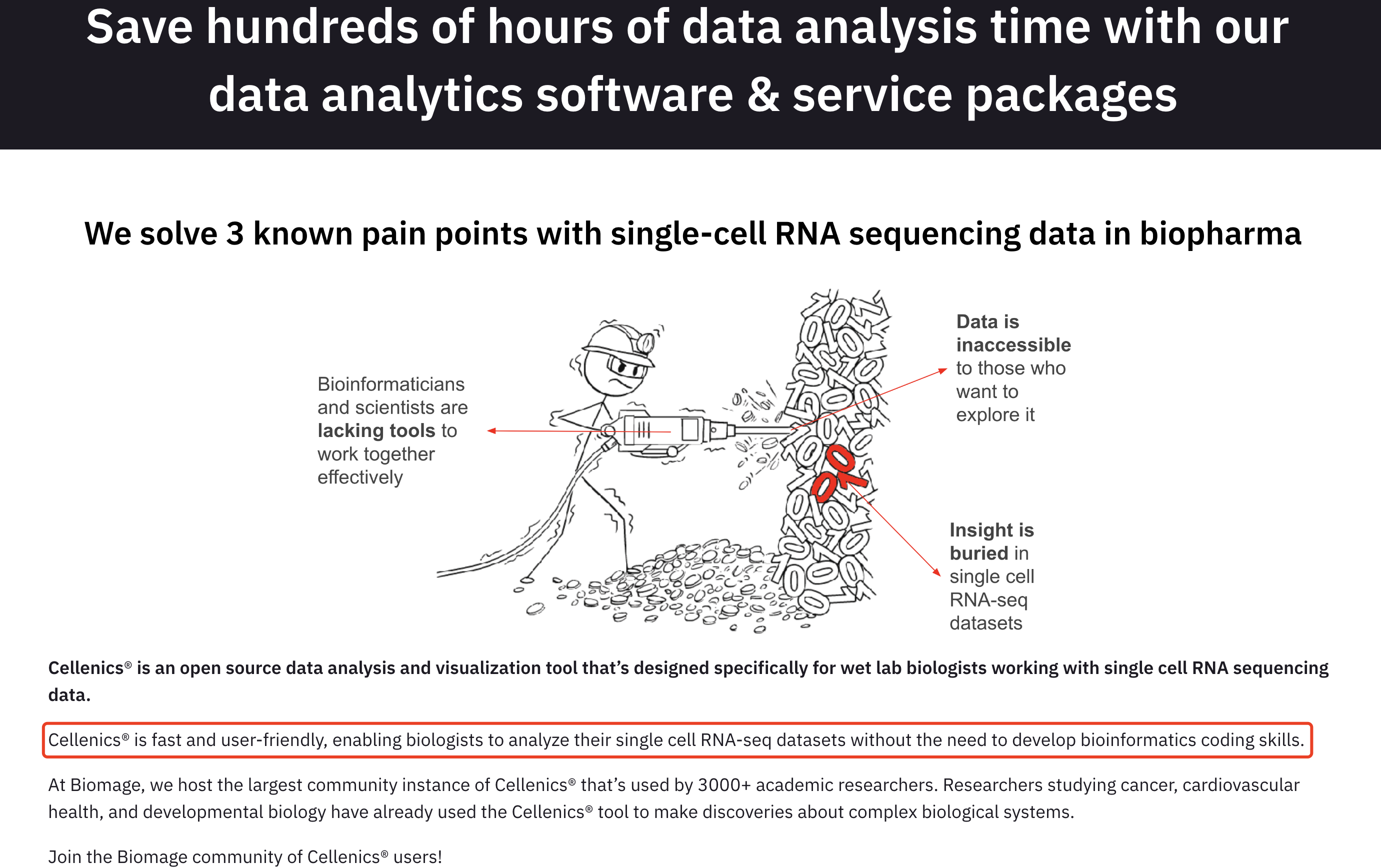最近看到了Twitter上面有一个前辈推荐了Cellenics这个商业的单细胞数据分析软件,虽然说实际上对我们真正的生信工程师来说基本上不会去使用那些界面软件的,但是这个软件的商业化的成功对我们来说一个好消息。
Cellenics这个商业的单细胞数据分析软件也很清楚它的定位,就是为了解决传统生命科学领域科研工作者不会代码的难题:
- Coding conundrums: Bioinformatics often requires a solid understanding of programming languages like R or Python. For many biologists, coding is often intimidating.
- Software selection: In the landscape of data analysis tools, it’s not uncommon to be unaware of the wide array of options available. Factors such as cost, accessibility, and functionality can influence the choice of tools. Navigating through these considerations, selecting the right tool, and learning its usage can indeed consume valuable research time.
- Waste of time and resources: Setting up, running, and troubleshooting bioinformatics pipelines can be time-consuming. For researchers on tight schedules, this can delay important findings and publications.
- Data interpretation: Even after successfully running an analysis, interpreting the results in a biologically meaningful way presents another hurdle. Without a deep understanding of the tools used, results can be misinterpreted, leading to flawed conclusions.
我看了看Cellenics这个商业的单细胞数据分析软件的宣传片,注意到它有一个配套的10小时的使用操作视频,链接是:https://courses.biomage.net/courses/mastering-scrna-seq-with-cellenics
但是,居然是收费的,而且不便宜哦,折合人民币都三四千块钱了,赶上了我们的马拉松生物信息学入门课程。

配套的10小时的使用操作视频所代表的知识点目录或许有可取之处:
Introduction to scRNA-seq
- Getting to know you
- Introduction to Single-Cell RNA Seq
- Experimental Design
Introduction to Cellenics® and File Upload
- From FASTQ Files to Count Matrices - Part 1
- From FASTQ Files to Count Matrices - Part 2
- File Conversion
- Get started with Cellenics®
- Introduction to Cellenics®
- File and Metadata Upload
Data Processing
- Introduction
- Step 1 - Classifier Filter
- Step 2 - Cell Size Distribution Filter
- Step 3 - Mitochondrial Content Filter
- Step 4 - Number of genes vs UMIs filter
- Step 5 - Doublet Filter
- Step 6 & 7 - Data Integration & Configuring Embedding
- Real World Examples - Part 1
- Real World Examples - Part 2
- Real World Examples - Part 3
Data Integration
- Data Integration step - part 1 - Normalization
- Data Integration step - part 2 - Feature selection
- Data Integration step - part 3 - Dimensionality reduction
- Data Integration step - part 4 - Data integration
- Data Integration step - part 5 - How to assess the quality of data integration
- Data Integration step - part 6 - Exclusion of specific gene categories
- Data integration step - part 7 - Downsampling
Data Exploration
- Data Exploration - part 1 - Embedding
- Data Exploration - part 2 - Clustering
- Data Exploration - part 3 - Cell sets
- Data Exploration - part 4 - Cell type annotation
- Data Exploration - part 5 - Heatmap and marker genes
- Data Exploration - part 6 - Differential expression analysis
- Data Exploration - part 7 - Pathway analysis
lots and Tables
- Plots and Tables - part 1 - Cell sets and Metadata
- Plots and Tables - part 2 - Trajectory analysis
- Plots and Tables - part 3 - Gene expression
- Plots and Tables - part 4 - Differential expression
- Plots and Tables - part 5 - Reproducing figures from a paper
这确实是一个很好的生物信息学变现机会
我看了看这个Cellenics软件,Cellenics® is an open source software developed by © 2020-2023 President and Fellows of Harvard College.
而背后的公司是Biomage ,Biomage is an open source software company that provided services to Harvard Medical School for the design and development of Cellenics®.
他们还提供生物信息学数据分析的咨询服务,而且主打单细胞数据分析软件的授权。专门是帮助不懂代码的生物学家更好的理解他们的单细胞转录组数据:

实际上,早在三年前我们就有过类似的头脑风暴,希望做单细胞数据一站式分析平台的开发及推广,详见; https://www.mubu.com/doc/2RYc4vgN2R_
但是,为什么没有做下去呢?
